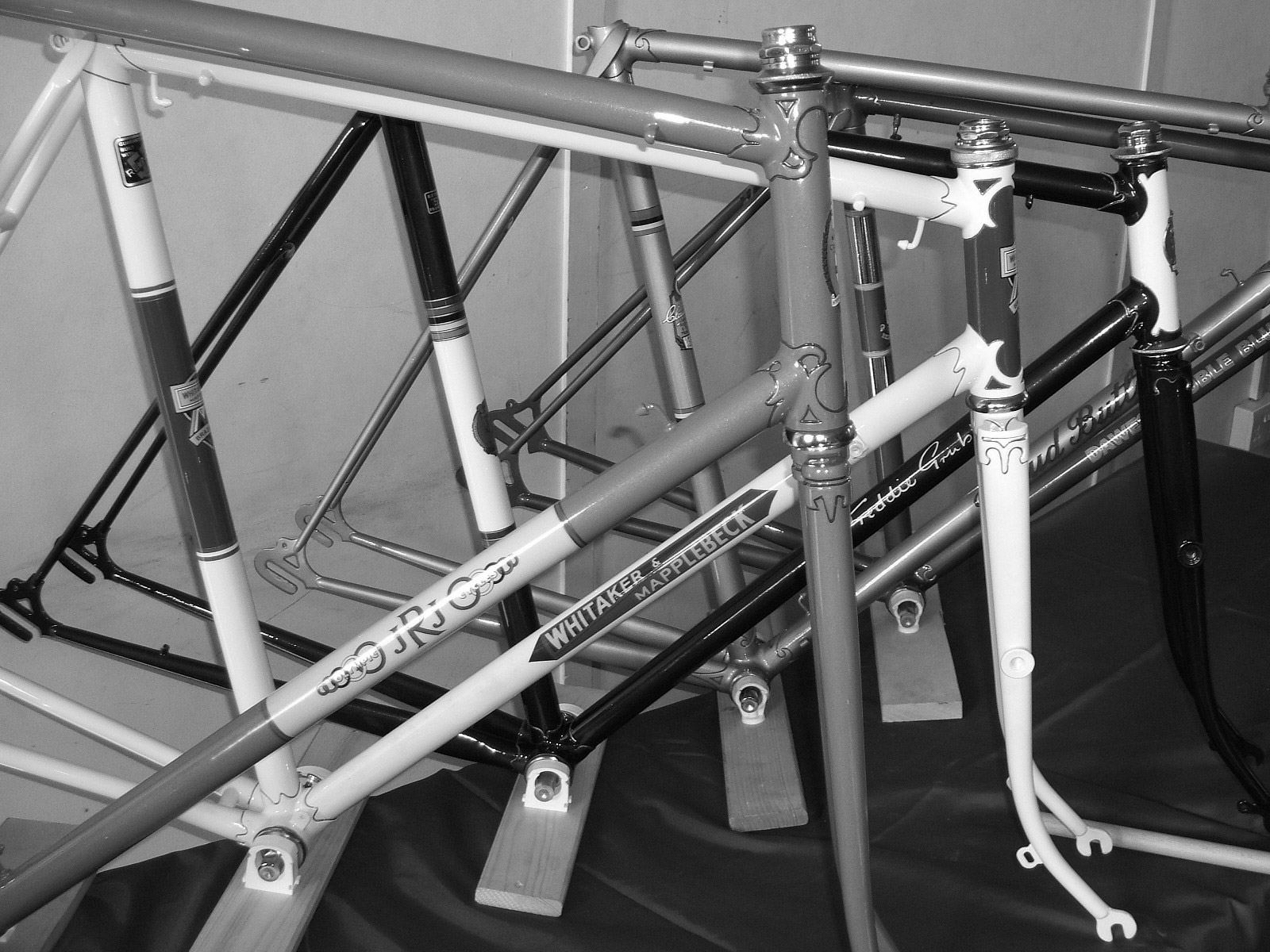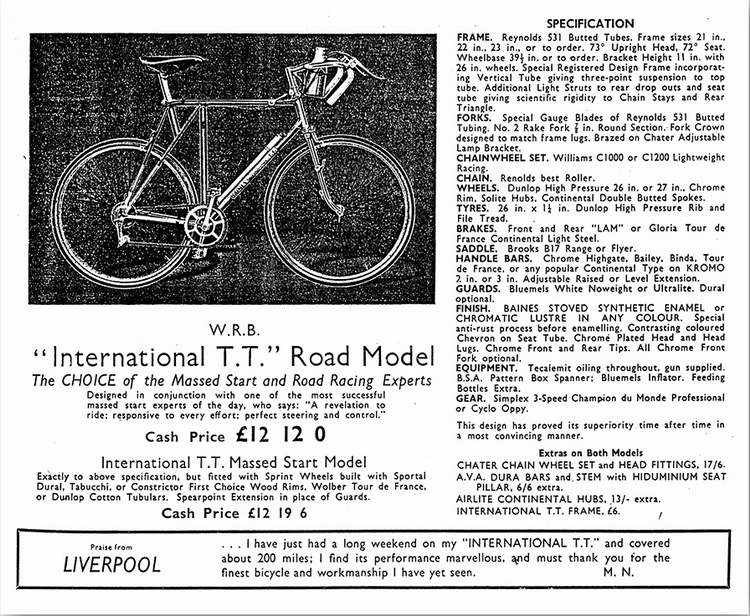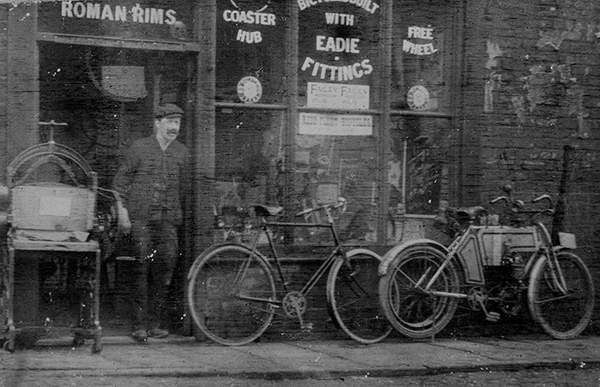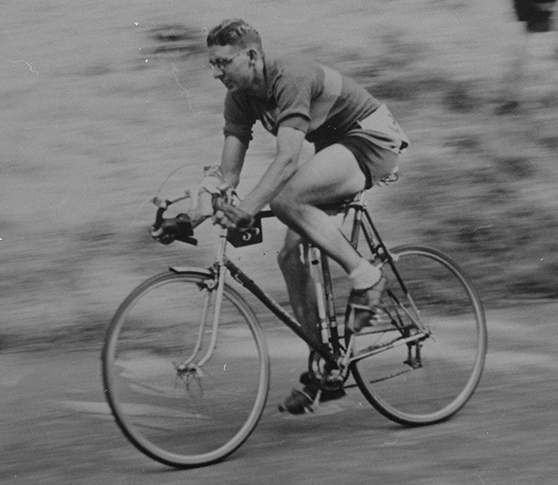Baines Flying Gate
Posted: Tuesday 21st July 2020
The Baines Brothers, Reg and Willie were none too keen on the nickname ‘Flying Gate’ that was applied to their short-wheelbase frame design, the VS37 shortly after it came out in 1935 but it stuck and was later used as the official name when production restarted in the 1970s.
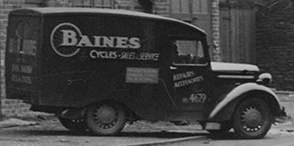
The Baines family had a long history in the cycle trade, their father had started the Manor Cycle Works at Eccleshill, Bradford in 1898. In 1928 Willie and his brother Reg set up a shop in Idle road, Bradford. By 1934 they had started to build pretty much standard frames. But then Reg was leafing through an early cycle book from the 1890s when he spotted a design with a very steep seat tube and short chainstays. In the 30s’ the pages of Cycling magazine were full of articles and correspondence on how to build a faster frame. It was thought then that short chainstays would make a frame that was more efficient because the bottom bracket flexed less. Rather than use a curved seat pin on a conventional frame to retain the correct rider position he thought that it would be much neater to continue the top tube beyond the seat tube and then mount the seat pin on the end in a short dummy seat tube supported by an extra pair of seat stays.
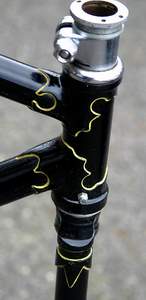
Their new frame design, the VS37 was first shown in Cycling in November 1936. Also shown alongside was another variant in the same theme called V38 which was very similar but had no seatstays connecting the rear ends to the top of the vertical seat tube. This model was made in small numbers up until 1940 but never captured the cyclists’ imagination. Demand was soon very strong and the Baines brothers opened two more depots. The works was very well laid out by the standards of the time. A surface table was used to lay the frames out on. They were rarely flashy frames on the outside though the lugs were hand cut and began to take on more intricate shapes.
Reg told me in a 1986 interview that they were far more concerned to get the inside right – with correct mitreing and clean brazing. Special bottom bracket shells and top seat tube lugs were cast by Vaughans in Birmingham to accommodate the vertical seat tube. By 1938 there were three ‘Flying Gate’ models. The original VS 37 (so-called because of its 37 3/4in wheelbase), the V38 and an International TT model. This later model was created after Jack Fancourt won the 1937 Isle of Man TT mass start race on a ‘Flying Gate’ frame. The International TT model used the same frame design as the VS 37 but with a longer 39 1/2in wheelbase more suitable for road racing and derailleur gears. This model was raced with many successes by Jack Fancourt and Jack Holmes at mass start races at Brooklands and Donnington in 1938 and 1939 and at the 1938 World Championships in Valkenburg.
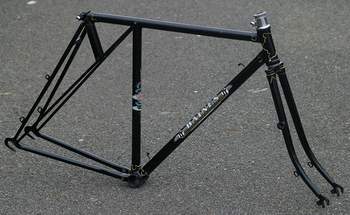
Frame production restarted after the war but with essentially the one model, the Whirlwind (left). This was built with wheelbase and frame design to the rider’s wishes. It was not possible in the post war years to get the special bottom bracket shells and special seat tube lugs cast so when supplies ran out fillet brazing was used instead. Frame production stopped around 1951–2 though Whitaker and Mapplebeck built a final 12 Whirlwinds for Baines in 1953.
The ‘Flying Gate’ design was resurrected in the late 1970s by Trevor Jarvis who acquired the rights to the design and this time around were officially called Flying Gates. Quite a number were produced in the late 70s and early 80s at TJ Cycles in Burton-on-Trent. Some of these were intended for time trialling, others were made for touring. In 1984 he moved to Tenbury Wells and production continues to this day in small quantities. Many of Trevor’s frames feature very fancy hand-cut lugwork and some feature wheelbases as short as 35in.
Trevor Jarvis can be contacted for modern Flying Gate frames and transfers for the older Baines machines at 1 Northwick Cottage, Rhyse Lane, Lower Rochford, Tenbury Wells, Worcs WR15 8HF tel 01584 811451.
Frame
The ‘Flying Gate’ frame design allows for a very short rear triangle which many riders find very responsive.
Lugs
The very early Gates used very plain lugs similar to those used by most other 30s builders. The lugs were later cut a little more fancy but a substantial amount of filing was needed as the cast lugs were very thick as they came from the foundry.
Equipment
The pre-war VS37 model was designed mostly for time trialling with a fixed gear. The International TT model (image right and catalogue below) designed for road racing was specced in the catalogue with a Simplex Champion du Monde 3-speed derailleur or Cyclo Oppy derailleur.
Frame Numbers
Between five and 15 were built per week pre-war with 95% or so being to the ‘Flying Gate’ design though conventional models were still available. Frame numbers it is believed started at about 100 and reached nearly 1000 before the war and to about 2000 when production ceased.
Posted: Tuesday 21st July 2020
This article appears in the following categories.
Upcoming Events
Whether you are looking for a gentle social meet up, or a 100-mile ride browse the community’s upcoming events and plan your next weekend outing.
